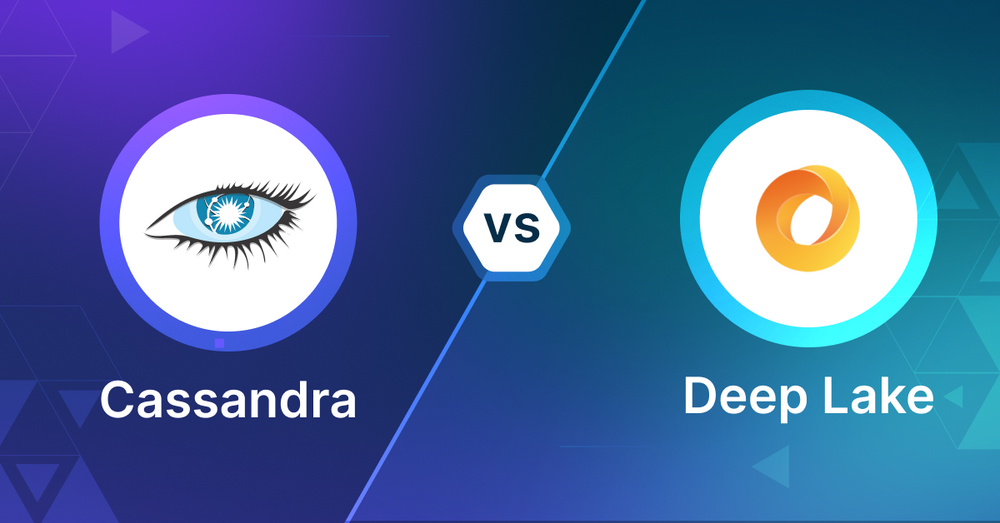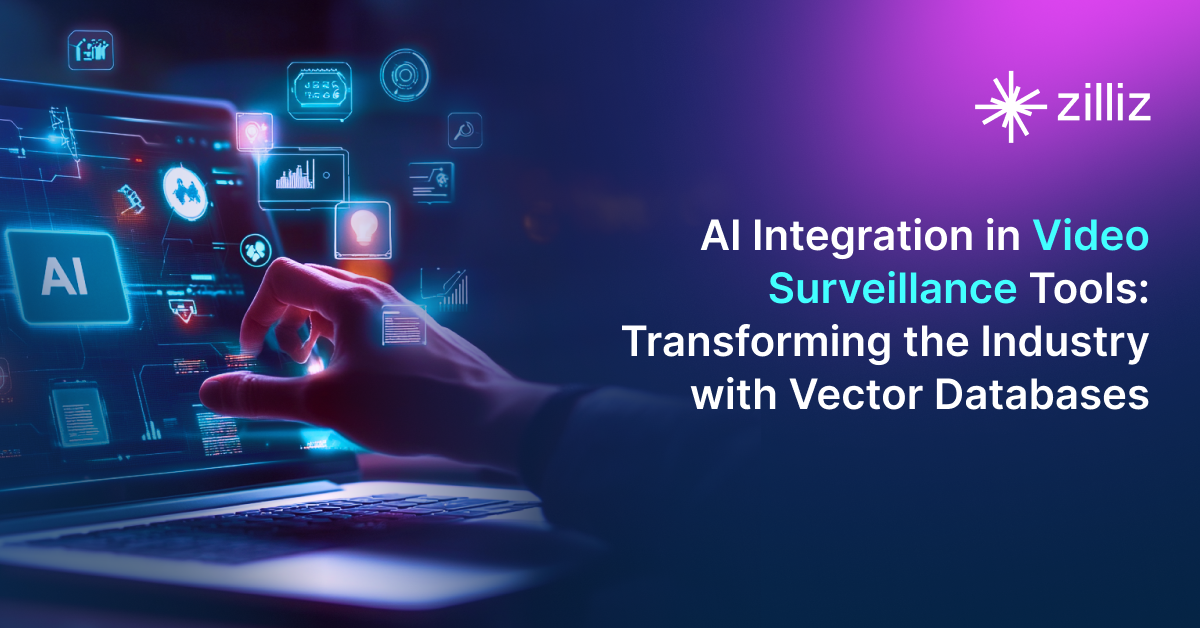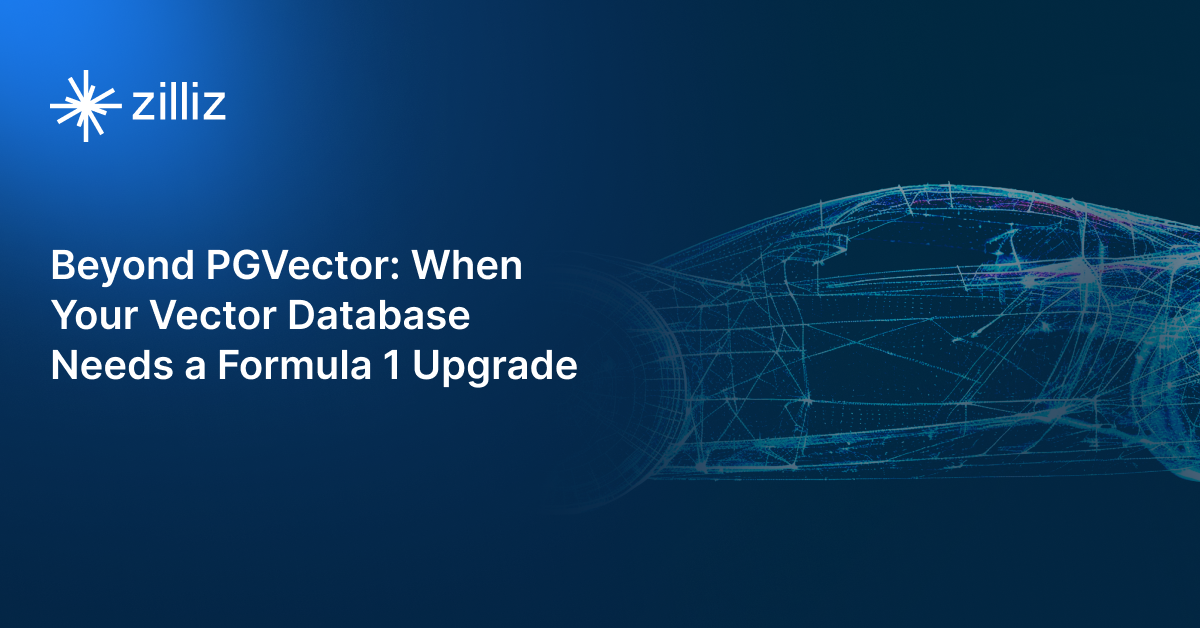Apache Cassandra vs Deep Lake: Choosing the Right Vector Database for Your AI Apps

Introduction
As artificial intelligence continues to redefine this data-driven world, the need for robust vector databases that can handle complex data structures like vector embeddings is becoming increasingly evident. This blog will introduce and compare two notable databases: Apache Cassandra and Deep Lake. Each offers distinctive approaches to handling vector embeddings essential for AI applications.
What is a Vector Database?
Before we compare Apache Cassandra vs Deep Lake, let's first explore the concept of vector databases.
A vector database is specifically designed to store and query high-dimensional vectors, which are numerical representations of unstructured data. These vectors encode complex information, such as text's semantic meaning, images' visual features, or product attributes using machine learning models. By enabling efficient similarity searches, vector databases play a pivotal role in AI applications, allowing for more advanced data analysis and retrieval.
Vector databases have been adopted in many use cases, including e-commerce product recommendations, content discovery platforms, anomaly detection in cybersecurity, medical image analysis, and natural language processing (NLP) tasks. They also play a crucial role in Retrieval Augmented Generation (RAG), a technique that enhances the performance of large language models (LLMs) by providing external knowledge to reduce issues like AI hallucinations.
There are many types of vector databases available in the market, including:
- Purpose-built vector databases such as Milvus, Zilliz Cloud (fully managed Milvus)
- Vector search libraries such as Faiss and Annoy.
- Lightweight vector databases such as Chroma and Milvus Lite.
- Traditional databases with vector search add-ons like Apache Cassandra
Understanding Apache Cassandra
Apache Cassandra is an open-source, distributed NoSQL database system designed to handle massive amounts of data across many servers with no single point of failure. It was originally developed to efficiently handle large amounts of structured and semi-structured data across many nodes. Cassandra is known for its high scalability, fault tolerance, and ability to operate in distributed environments with minimal downtime or performance degradation.
With the release of Cassandra 5.0, Apache Cassandra is evolving beyond its core functionality as a NoSQL database to support vector embeddings and vector search. Cassandra's vector search functionality is built on its existing architecture. It allows users to store vector embeddings alongside other data and perform similarity searches. This integration enables Cassandra to support AI-driven applications while maintaining its strengths in handling large-scale, distributed data.
A key component of Cassandra's vector search is Storage-Attached Indexes (SAI). SAI is a highly scalable and globally distributed index that adds column-level indexes to any vector data type column. It provides unparalleled I/O throughput for databases using Vector Search and other search indexing. SAI offers extensive indexing functionality, capable of indexing both queries and content (including large inputs like documents, words, and images) to capture semantics.
Vector Search is the first instance of validating SAI's extensibility, leveraging its new modularity. This Vector Search and SAI combination enhances Cassandra's capabilities in handling AI and machine learning workloads, making it a strong contender in the vector database space.
Understanding Deep Lake
Deep Lake is a specialized database system designed to handle the storage, management, and querying of vector and multimedia data, such as images, audio, video, and other unstructured data types, which are increasingly used in AI and machine learning applications. Deep Lake can be used as a data lake and a vector store:
Deep Lake as a Data Lake: Deep Lake enables efficient storage and organization of unstructured data, such as images, audio, videos, text, medical imaging formats like NIfTI, and metadata, in a version-controlled format designed to enhance deep learning performance. It allows users to quickly query and visualize their datasets, facilitating the creation of high-quality training sets.
Deep Lake as a Vector Store: Deep Lake provides a robust solution for storing and searching vector embeddings and their associated metadata, including text, JSON, images, audio, and video files. You can store data locally, in your preferred cloud environment, or on Deep Lake's managed storage. Deep Lake also offers seamless integration with tools like LangChain and LlamaIndex, allowing developers to easily build Retrieval Augmented Generation (RAG) applications.
Key Differences Between Apache Cassandra and Deep Lake
Search Methodology
Apache Cassandra integrates vector search through extensions, adapting its traditional database architecture to support new AI functionalities. In contrast, Deep Lake is built with a focus on vector search and management, incorporating advanced algorithms directly into its core functionality, allowing for more efficient vector operations.
Data Handling
Cassandra is adept at managing structured and semi-structured data but requires additional setup to handle unstructured vector data effectively. Deep Lake, meanwhile, is designed to inherently manage unstructured data, making it a natural fit for applications centered on multimedia content.
Performance and Scalability
Both technologies are scalable, but Cassandra is particularly renowned for its ability to handle very high write and read loads across distributed environments. Deep Lake focuses more on optimizing query performance, which is crucial for complex vector calculation applications.
Flexibility and Customization
While Cassandra offers broad flexibility in data modeling and can be extensively customized for various applications, Deep Lake provides specialized tools and features geared specifically towards vector data, albeit with somewhat less general flexibility.
Integration and Ecosystem
Cassandra works well with other Apache tools like Spark and Hadoop. It's part of a bigger ecosystem of open-source data tools, which can be a significant advantage for developers who prefer open technologies.
Deep Lake is better integrated with AI and machine learning ecosystems such as LangChain and LlamaIndex, offering native support for commonly used model formats and machine learning frameworks.
Cost and Ease of Use
Cassandra generally presents a lower-cost option for large-scale deployments and is supported by extensive documentation and a strong community. Deep Lake, while potentially more costly, especially if its full capabilities are underutilized, offers a simpler setup for its specialized functions.
When to Choose Each Technology
Choosing between Apache Cassandra and Deep Lake depends heavily on your specific application needs—whether they lean more towards traditional big data tasks or specialized vector handling capabilities. Here is a summary of key considerations:
When to Choose Apache Cassandra
Choose Apache Cassandra when:
- You need massive scalability for handling large, distributed datasets.
- High availability and fault tolerance are critical for your application.
- Your focus is on real-time analytics or applications requiring high write throughput.
- You require flexible data management for structured and semi-structured data.
- You can integrate external tools for vector search rather than needing native support.
When to Choose Deep Lake
Choose Deep Lake when:
- Your project involves vector data and AI workflows like machine learning or NLP.
- You need to handle large volumes of multimedia or unstructured data.
- You're working on deep learning model training with data versioning.
- You need native, high-dimensional vector search capabilities.
Using Open-source VectorDBBench to Evaluate and Compare Vector Databases on Your Own
VectorDBBench is an open-source benchmarking tool designed for users who require high-performance data storage and retrieval systems, particularly vector databases. This tool allows users to test and compare the performance of different vector database systems such as Milvus and Zilliz Cloud (the managed Milvus) using their own datasets and determine the most suitable one for their use cases. Using VectorDBBench, users can make informed decisions based on the actual vector database performance rather than relying on marketing claims or anecdotal evidence.
VectorDBBench is written in Python and licensed under the MIT open-source license, meaning anyone can freely use, modify, and distribute it. The tool is actively maintained by a community of developers committed to improving its features and performance.
- Download VectorDBBench from its GitHub repository to reproduce our benchmark results or obtain performance results on your own datasets.
- Take a quick look at the performance of mainstream vector databases on the VectorDBBench Leaderboard.
- Benchmark Vector Database Performance: Techniques & Insights
- Compare any vector database to an alternative
Further Resources about VectorDB, GenAI, and ML
- Introduction
- What is a Vector Database?
- Understanding Apache Cassandra
- Understanding Deep Lake
- Key Differences Between Apache Cassandra and Deep Lake
- When to Choose Each Technology
- Using Open-source VectorDBBench to Evaluate and Compare Vector Databases on Your Own
- Further Resources about VectorDB, GenAI, and ML
Content
Start Free, Scale Easily
Try the fully-managed vector database built for your GenAI applications.
Try Zilliz Cloud for FreeKeep Reading

Milvus WebUI: A Visual Management Tool for Your Vector Database
Milvus WebUI is a built-in GUI introduced in Milvus v2.5 for system observability. WebUI comes pre-installed with your Milvus instance and offers immediate access to critical system metrics and management features.

AI Integration in Video Surveillance Tools: Transforming the Industry with Vector Databases
Discover how AI and vector databases are revolutionizing video surveillance with real-time analysis, faster threat detection, and intelligent search capabilities for enhanced security.

Beyond PGVector: When Your Vector Database Needs a Formula 1 Upgrade
This blog explores why Postgres, with its vector search add-on, pgvector, works well for smaller projects and simpler use cases but reaches its limits for large-scale vector search.
The Definitive Guide to Choosing a Vector Database
Overwhelmed by all the options? Learn key features to look for & how to evaluate with your own data. Choose with confidence.